The interstellar comet 3I/ATLAS grazes Mars : observation plans and scientific prospects
On October 3, 2025, the interstellar comet 3I/ATLAS will make a close approach to Mars, approaching about 30 million kilometers from the red planet. This encounter offers a unique opportunity for scientists to study an object coming from beyond our solar system.
An exceptional observing opportunity
Discovered on July 1, 2025 by the ATLAS system in Chile, 3I/ATLAS is the third interstellar object identified traversing our solar system, after 1I/ʻOumuamua in 2017 and 2I/Borisov in 2019. Its hyperbolic trajectory and its high velocity indicate an origin outside our solar system. The close passage of 3I/ATLAS near Mars represents a rare opportunity for missions in Martian orbit to directly observe an interstellar comet.
The Martian missions mobilized
The European Space Agency (ESA) plans to use its Mars-orbiting missions to observe 3I/ATLAS. Mars Express, in service since 2003, and the Trace Gas Orbiter (TGO) of the ExoMars mission, operational since 2016, are equipped with instruments capable of analyzing the chemical composition and the structure of the comet. These observations could provide valuable information about the nature of the materials constituting 3I/ATLAS and about the physical processes at play during its passage near the Sun.
Scientific objectives and expectations
The study of 3I/ATLAS offers scientists the opportunity to compare the composition and characteristics of an interstellar comet with those of comets originating from our solar system. This could help to better understand the processes of planetary formation and the evolution of materials in different galactic environments. Researchers also hope to detect complex organic molecules, which are precursors to life, and thus explore the diversity of planetary environments in our galaxy.
Visibility from Earth
For ground-based observers, 3I/ATLAS will remain difficult to observe. Its magnitude estimated at about 18.8 makes it too faint to be detected without the aid of professional telescopes. Moreover, its minimum distance from Earth, estimated at more than 240 million kilometers, excludes any risk of collision or notable effect on our planet.
In short, the close passage of 3I/ATLAS near Mars constitutes an unprecedented opportunity for the scientific community to study an interstellar visitor up close, thanks to the instruments in Martian orbit. The data collected could enrich our understanding of interstellar objects and the processes of planetary formation in the universe.

 All
All
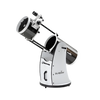 Dobson
Dobson
 Refractors
Refractors
 Ed & Apochromates
Ed & Apochromates
 Newtonian reflector
Newtonian reflector
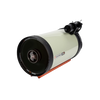 Schmidt Cassegrain
Schmidt Cassegrain
 Maksutov-Cassegrain
Maksutov-Cassegrain
 Solar
Solar
 Researcher
Researcher
 Focal reducer
Focal reducer
 Intelligent
Intelligent
 All
All
 Equatorial
Equatorial
 Alt/Az
Alt/Az
 Harmonic
Harmonic
 Tripods
Tripods
 Accessories
Accessories
 All
All
 Wide angle
Wide angle
 Zoom eyepieces
Zoom eyepieces
 Reticulated eyepieces
Reticulated eyepieces
 Barlow
Barlow
 Plössl
Plössl
 Binoculars
Binoculars
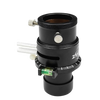 Atmospheric Corrector
Atmospheric Corrector
 All
All
 Visual
Visual
 Photo
Photo
 Polarisants
Polarisants
 Solar Filters
Solar Filters
 Accessories
Accessories
 All
All
 Color Cameras
Color Cameras
 Monochrome Cameras
Monochrome Cameras
 Planetary/Guiding
Planetary/Guiding
 Objectives
Objectives
 All
All
 Binoculars
Binoculars
 Spotting Scope and Monocular
Spotting Scope and Monocular
 Elbows
Elbows
 Optical Divider
Optical Divider
 Mirrors
Mirrors
 All
All
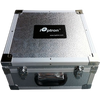 Bags and protections
Bags and protections
 Supports and counterweights,
Supports and counterweights,
 Camera adapters
Camera adapters
 Focuser
Focuser
 Collimation
Collimation
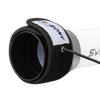 Heating band
Heating band
 Cables
Cables
 Collars
Collars
 Computers
Computers
 Fans
Fans
 Others
Others
 All
All
 Weather Station
Weather Station
 Thermometer
Thermometer
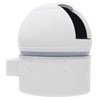 All
All
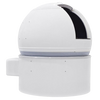 Observatory/Domes
Observatory/Domes
 Accessories
Accessories
 Askar
Askar
 Baader
Baader
 Bresser
Bresser
 Celestron
Celestron
 Explore Scientific
Explore Scientific
 GSO
GSO
 Optolong
Optolong
 Touptek
Touptek
 Vixen
Vixen
 ZWO
ZWO